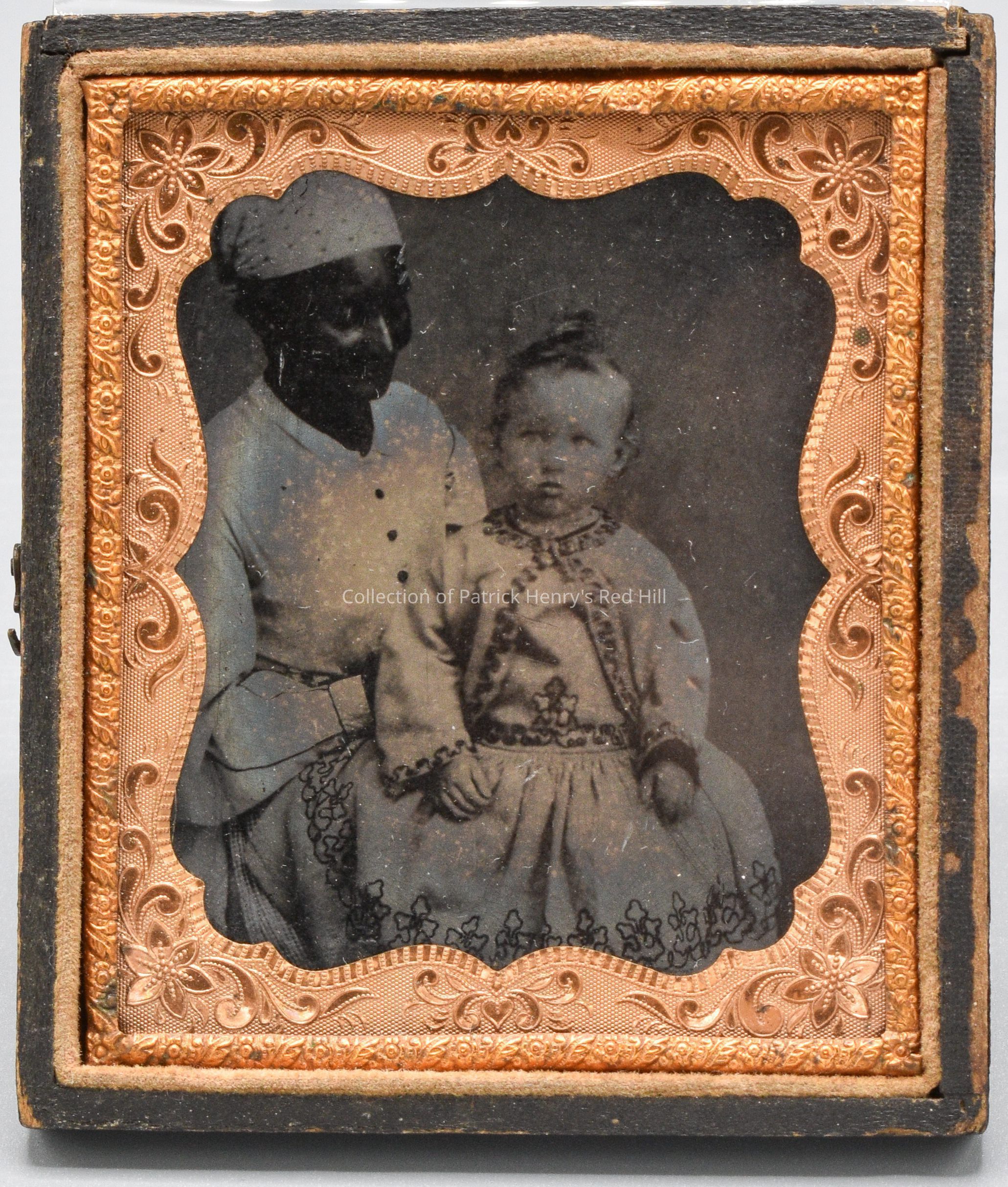Notes
This tintype is believed to picture a descendant of Patrick Henry possibly related to Margaret Henry Ottarson (1911–1981), a great-great-granddaughter of Henry. The Black woman was likely a formerly enslaved nanny of the family at Windstone plantation.
Windstone was built for Edward Winston Henry, Sr. (1794–1872), a son of Patrick Henry, after he and his brother John Henry (1796–1868) divided their inherited Red Hill property around 1815. His son Edward Winston Henry, Jr. (1840–1904) lived in it and passed it on to his son Dandridge Yuille "D. Y." Henry (1869–1950), who lived there until his death, after which his son Edward rented out the house. It was destroyed by fire shortly thereafter in 1950.
Dating this photograph relies on both its material and the clothing of its sitters. The tintype process was patented in 1856. The image is fitted into a case with a glass protector secured over a matte and wrapped with a brass preserver. Preservers and mattes with this type of intricate patterns were not seen until around 1859. These material characteristics indicate this tintype dates no earlier than the late 1850s.
Additionally, the "short clothes" worn by the child indicate that he or she is one or two years of age and in the crawling stage. These garments were worn by male and female toddlers, as boys were not potty-trained and "breeched" until three to eight years of age. The style of the Black woman's top was popular in the 1860s and 1870s, as was the soutache braiding on the child's clothing. The Zouave jacket, showcasing French influence, was most popular during the 1860s and waned by the early 1870s. The dating of the clothing is in line with that of the tintype matte and preserver, narrowing the possible date range of the image to circa 1860–1870.
With this date range in mind, a possible identification of the child can be accomplished. D. Y. Henry and his sister, Frances Henry (1868–1956), were both born at Windstone. Given their close connection (father and aunt) to Margaret Ottarson and their birth years of 1869 and 1868, respectively, the child in the photograph may be Dandridge or Frances Henry—most likely a photo of Dandridge that was passed on to his daughter, Margaret. According to these birthdates, the previously proposed creation date of circa 1860–1870 can be narrowed to circa 1870, just a few years following the conclusion of the Civil War.
The Black woman may well have been a nanny once enslaved at Windstone and free at the time of the tintype’s creation—her identity and age unable to be confirmed due to a lack of records kept on enslaved and freed Black laborers.
This tintype, along with the other items in the 2023.24 accession, were in Ottarson's house when she sold it to her friend, Pamela Wood Kirchner. Kirchner gave the items to PHMF on March 23, 2023.
